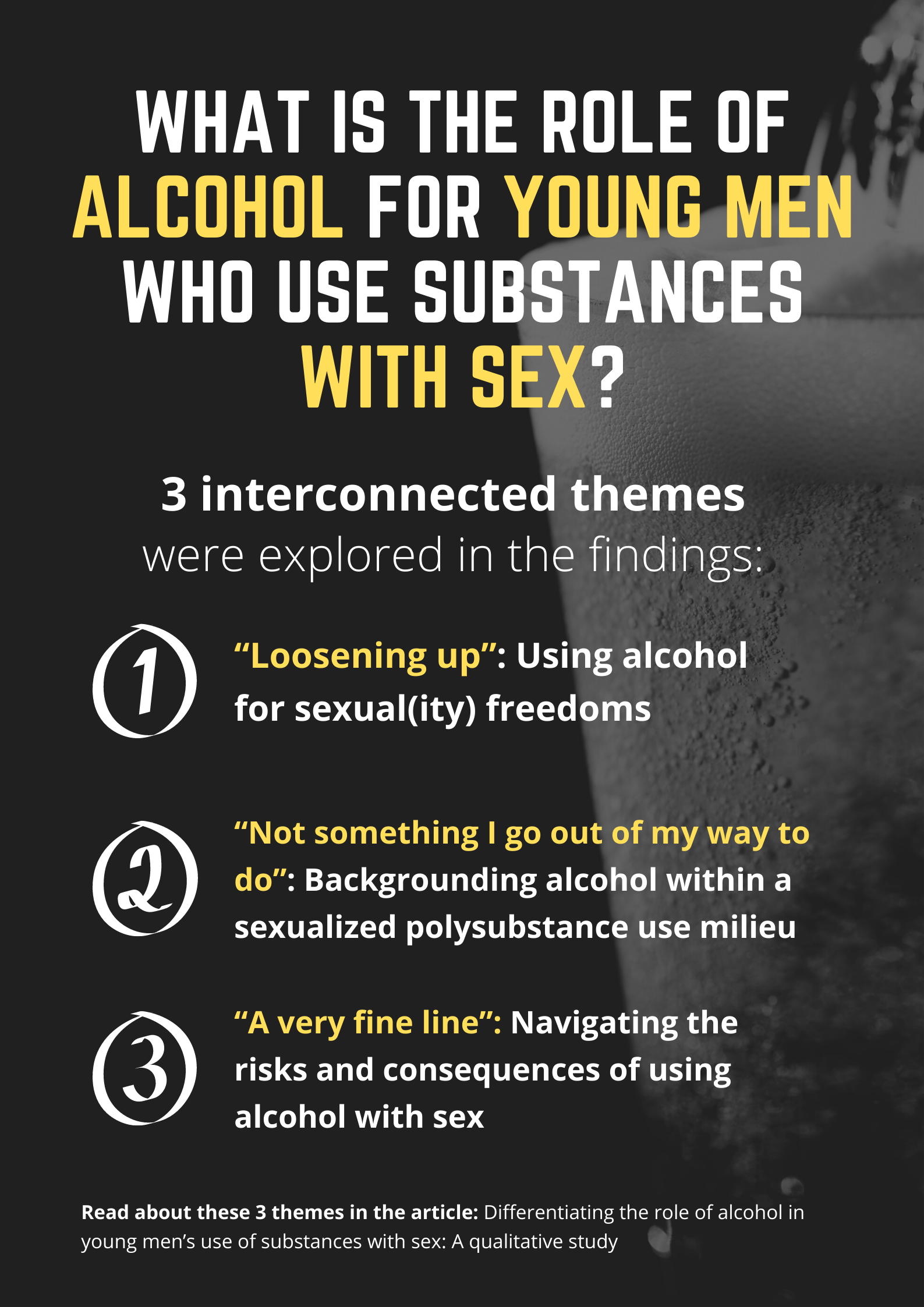
Historically, the use of alcohol has been high among men, with certain subgroups of men including young, trans, and other sexual minority men experiencing distinct inequities with regards to their patterns of alcohol use and its intersections with traditional masculine norms and sex. Given notable gaps in the literature on how alcohol-specific insights explain young men’s sexualised substance use, this study focused on the exploration of how, why and with what effects young men consume alcohol and the ways in which it features in their sexual lives.
Branching off a larger study that examined young men’s use of substances with sex in Vancouver, British Columbia, this study used interpretive description research design situated within a social constructivist research paradigm. Stratified, purposive sampling was used to recruit a sexually diverse sample of young men who used substances, stratified by their sexual orientation. Other eligibility criteria include i) living in Vancouver, ii) speak English, iii) self-identified as men, iv) aged 15-30 years old, and v) currently or previously sexually active. 76 semi-structured, individual interviews were conducted between January 2018 to February 2021, mostly in-person with some online as a result of the onset of the COVID-19 pandemic.
Three interconnected themes were derived from the findings. Firstly, it was using alcohol for sexual(ity) freedoms. This theme explored how young men use alcohol to reduce inhibitions and support experimentation, including facilitating and transgressing conservative or restrictive social and sexual norms. Secondly, it was backgrounding alcohol within a sexualized polysubstance use milieu which provided a deeper understanding of how young men seldom explicitly classify alcohol as a sexualised substance, despite its utilization and effects with sex, and that alcohol use was widespread and normative social practice. Lastly, navigating the risks and consequences of using alcohol with sex as the third theme detailed the characterization of young men’s sexualised alcohol use, and how they navigate the risks and consequences that are associated with it.
In essence, these findings highlight the use of alcohol as a ‘social lubricant’ in helping young men explore new forms of play during sex while mitigating feelings of anxiety and shame when engaging in non-heterosexual sex, juxtaposed against the dynamics of balancing risks and consequences of sexualised alcohol use, considering consent, pregnancy, sexually transmitted and other blood-borne infections and sexual dysfunction. These findings also corroborate previous findings on how other cis-gender, sexual minority men may rely on the use of alcohol as a tool to mediate or let go of minoritization-driven shame, and use avenue to enjoy sex in diverse ways which they’d otherwise find difficult to do sober.
These findings highlight that sexualised used of substances must be understood and responded to in a way that encompasses a whole range of substances, and considers the harms and benefits to young men’s sexual lives. Ultimately, harm reduction strategies should aim to support young men to achieve said benefits while reducing risks associated with sexualised substance use.